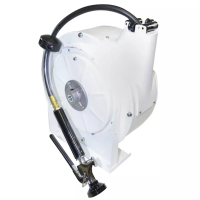Instruction Manual
D102005X012
846 Transducer
June 2017
16
Calibration
WARNING
The following calibration procedures require taking the transducer out of service. To avoid personal injury and property
damage caused by an uncontrolled process, provide some temporary means of control for the process before taking the
transducer out of service. Also refer to the WARNING at the beginning of the Maintenance section.
Calibration of the 846 requires either an accurate current generator or an accurate voltage generator with a precision
250‐ohm, 1/2‐watt resistor. Figure 9 shows how to connect either device.
Calibration also requires a precision output indicator and a minimum non-surging air supply of 5.0 normal m
3
/hr
(187 scfh) at 1.4 bar (20 psi) for standard performance units. For multirange performance units, the air supply must be
at least 0.2 bar (3 psi) greater than the maximum calibrated output pressure, up to 2.4 bar (35 psi) maximum.
For ease of calibration, the output load volume, including the output tubing and output indicator, should be a
minimum of 33 cm
3
(2 cubic inches). Review the information under Signal Interruption in the Installation section
before beginning the calibration procedure.
Before calibration, determine the type of input (full or split range), and the type of output action (direct or reverse).
Consult the factory for split range output calibration. Also, determine if the unit offers standard or multirange
performance. The unit supports eight basic input/output combinations:
Standard Performance
D Full Range Input, Direct Action
D Split Range Input, Direct Action
D Full Range Input, Reverse Action
D Split Range Input, Reverse Action
Multirange Performance
D Full Range Input, Direct Action
D Split Range Input, Direct Action (see note below)
D Full Range Input, Reverse Action
D Split Range Input, Reverse Action (see note below)
Note
Consult your Emerson sales office
or Local Business Partner for calibration of multirange performance units with split range input
or split range output, or both.

